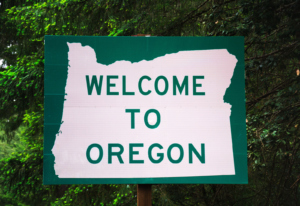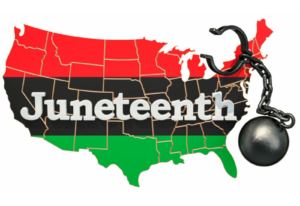Unless you’ve been living under a rock, you know that a pretty historic announcement was made last week by the U.S. Department of Health and Human Services (HHS). HHS officially recommended that marijuana be rescheduled from Schedule I to Schedule III of the federal Controlled Substances Act (CSA).
The HHS news means that the country’s top health agency has finally conceded that cannabis has medical value, and isn’t a drug of abuse on par with fentanyl or heroin. Many people in the cannabis industry are convinced that this HHS recommendation to the Drug Enforcement Administration (DEA) means that the DEA will undertake this rescheduling (and fairly quickly, too–which would be a huge departure from its refusal to reschedule back in 2016).
If cannabis goes from a Schedule I to a Schedule III, the cannabis industry as we know it will forever change. We recently wrote about three facts and myths from this massive development, but in this post I want to cover what I think legal cannabis looks like in the U.S. if the plant is moved to Schedule III. While all existing cannabis companies will benefit from axing I.R.C. 280E from their business plans and medical research will finally open up, I think the longer game ultimately spells trouble for our current state-legal cannabis industry. Just my two cents; feel free to disagree.
Schedule III is not a free-for-all
Schedule III controlled substances are classified by the DEA as drugs with low to moderate potential for physical and psychological dependence. According to the DEA, when misused, these drugs can still lead to abuse or addiction, even if less dangerous than Schedule I or II controlled substances. Schedule III’s are not available over-the-counter; you can only secure them via a prescription from your treating healthcare provider. This is the reason, for example, that you can’t go to your local gas station and pick up suboxone next to the beer aisle.
Furthermore, states have their own mini-CSAs that are pretty much lock-step with the federal CSA. This means that under both state and federal laws, only certain healthcare providers or licensed pharmacists can dispense (or even refill) Schedule III controlled substances. And, of course, a Schedule III controlled substance can only be prescribed for a “a legitimate medical reason”, which entails maintaining a valid record of care through a treating healthcare provider.
Needless to say, cannabis being re-classified as a Schedule III tees it up for an endless amount of healthcare regulation, from how it will be produced, stored, and dispensed to applicable standards of care. I personally work with ketamine clinics, and ketamine is a Schedule III controlled substance. All of those clients have to deal with a myriad of healthcare law and regulatory issues under both federal and state law, and the cost of compliance is not cheap. We should also see other professional conduct rules for the physicians, healthcare providers, and pharmacists who prescribe and supply approved forms of cannabis, including mandatory drug monitoring programs.
All of this will be a wild departure from the medical cannabis dispensaries that mainly exist today (with the exception of maybe a handful of states that basically have a de facto pharmacy model in place now). As a footnote, since the early 2000s, physicians have had a constitutional right to discuss with their patients the medical benefits and use of cannabis, but they’ve only ever been able to “recommend” its use under state law, which spared everyone the immense headache of dealing with existing healthcare laws and regulations.
Existing healthcare laws and regulations
If you’re still thinking that pursuit of a cannabis enterprise is for you after its reschedule to a III, you need to consider the bevvy of healthcare regulation you’ll now face. The first hurdle is probably the corporate practice of medicine doctrine (CPOM). Cannabis businesses are used to cottage-style rules where there are residency restrictions or other barriers to entry to keep things local and/or small, but the CPOM doctrine is a different and much harsher animal altogether.
In the CPOM sandbox, licensed healthcare providers can only form certain kinds of business entities through which to practice medicine, and they can only go into business with a short list of other healthcare providers with extremely limited exceptions. Generally, healthcare providers also cannot pay for referrals, engage in kickbacks, or fee split across the board, again with very limited exceptions. And if you plan on taking Medicaid, Medicare, or any other government-based or private insurance money, depending on the state you’re in and what reimbursement you seek, you’re also facing the Anti-Kickback Statute, Stark Law, other fraud and abuse laws, and their state law equivalents.
I think I can safely say that no state-legal cannabis company in existence today is dealing with these issues right now, and I haven’t even scratched the surface on things like the application of HIPAA, dealing with electronic health information, or compliance with the Food, Drug & Cosmetic Act when it comes to production. That is a much longer post. And, again, it’s not like no cannabis company could get in line with this kind of compliance, but the question is how much do they want to spend to do so and can they legally enlist the proper healthcare providers to accomplish the end game without violating the endless spiderweb of existing healthcare laws in the U.S.
Cannabis drug development
With potentially moving to Schedule III, cannabis research will become easier almost overnight. Right now, as a Schedule I, research is still nearly impossible. Moving to a III undoubtedly means more drug development exploration. This will introduce the Food and Drug Administration (FDA) and its Center for Drug Evaluation and Research (CDER) into the game, too. Depending on who you are in the regulatory pipeline, this makes you either very excited or very upset. Per the FDA’s own website:
Drug companies seeking to sell a drug in the United States must first test it. The company then sends CDER the evidence from these tests to prove the drug is safe and effective for its intended use. A team of CDER physicians, statisticians, chemists, pharmacologists, and other scientists reviews the company’s data and proposed labeling. If this independent and unbiased review establishes that a drug’s health benefits outweigh its known risks, the drug is approved for sale. The center doesn’t actually test drugs itself, although it does conduct limited research in the areas of drug quality, safety, and effectiveness standards. Before a drug can be tested in people, the drug company or sponsor performs laboratory and animal tests to discover how the drug works and whether it’s likely to be safe and work well in humans. Next, a series of tests in people is begun to determine whether the drug is safe when used to treat a disease and whether it provides a real health benefit.
There are multiple different tracks and timelines for drug approval in the U.S. Unbelievably, per Wikipedia, “in an analysis of the drug development costs for 98 companies over a decade, the average cost per drug developed and approved by a single-drug company was $350 million. But for companies that approved between eight and 13 drugs over 10 years, the cost per drug went as high as $5.5 billion.” It is absurdly expensive and incredibly time-intensive to get a drug to market in the U.S., barring emergency circumstances (essentially). I believe that there will be strong interest in cannabis drug development from existing pharmaceutical companies even with the length of time and costs involved. And the truth is, right now, they’re probably the only ones that can truly afford to develop any kind of cannabis drug after it’s rescheduled.
Adult use and schedule III
I’ve seen a few opinions on this topic. Most say that the current state-legal programs won’t be impacted by a reschedule. And in the short term, this is probably true–there still won’t be lawful interstate commerce, state laws and rules for adult use cannabis licensing will still apply, and cannabis companies (including the medical ones) will still be violating federal law minus the application of I.R.C. 280E where cannabis will no longer be a Schedule I or II controlled substance.
However, I don’t think this “holiday” will last very long. I say that because I think most states will have to make the determination that cannabis is a Schedule III in line with federal law pursuant to their own mini-CSAs. Further, because you cannot acquire Schedule IIIs over the counter, I don’t see pharmaceutical companies largely tolerating these state-by-state experiments as they generally fight and lobby to keep existing drug prices high. And it’s no secret that “Big Pharma” has incredible influence with the FDA already. So, you do the political math there. I don’t think it would surprise anyone that our large pharmaceutical companies would like to develop and fully occupy the field of cannabis-based drugs to the exclusion of any other competition. And unless we get some federal law carve out or enforcement memo supporting and protecting an entirely separate adult use industry outside of this new scheduling, I’m not sure how adult use cannabis escapes Schedule III reprecussions.
What happens now?
Well, we wait. It’s not a done deal that DEA will in fact re-schedule to a III. And, even if the DEA make rules to do so, that will take an incredible amount of time to accomplish. There will be a lot of public comment, and maybe even lawsuits, which will keep state-legal cannabis in tact “as is” for that much longer. I sincerely hope I’m wrong about the impact of a Schedule III decision, but I do not see how state-legal markets can square in the long run with existing healthcare laws and rules, as well as the pharmaceutical industry and lobby in the race for new (and lucrative) drugs. It would take some federal exception to those existing laws to keep adult use free and clear. And for those who believe or hope that this initial reschedule could lead to descheduling altogether, I think that is a pipedream once cannabis hits Schedule III.

























